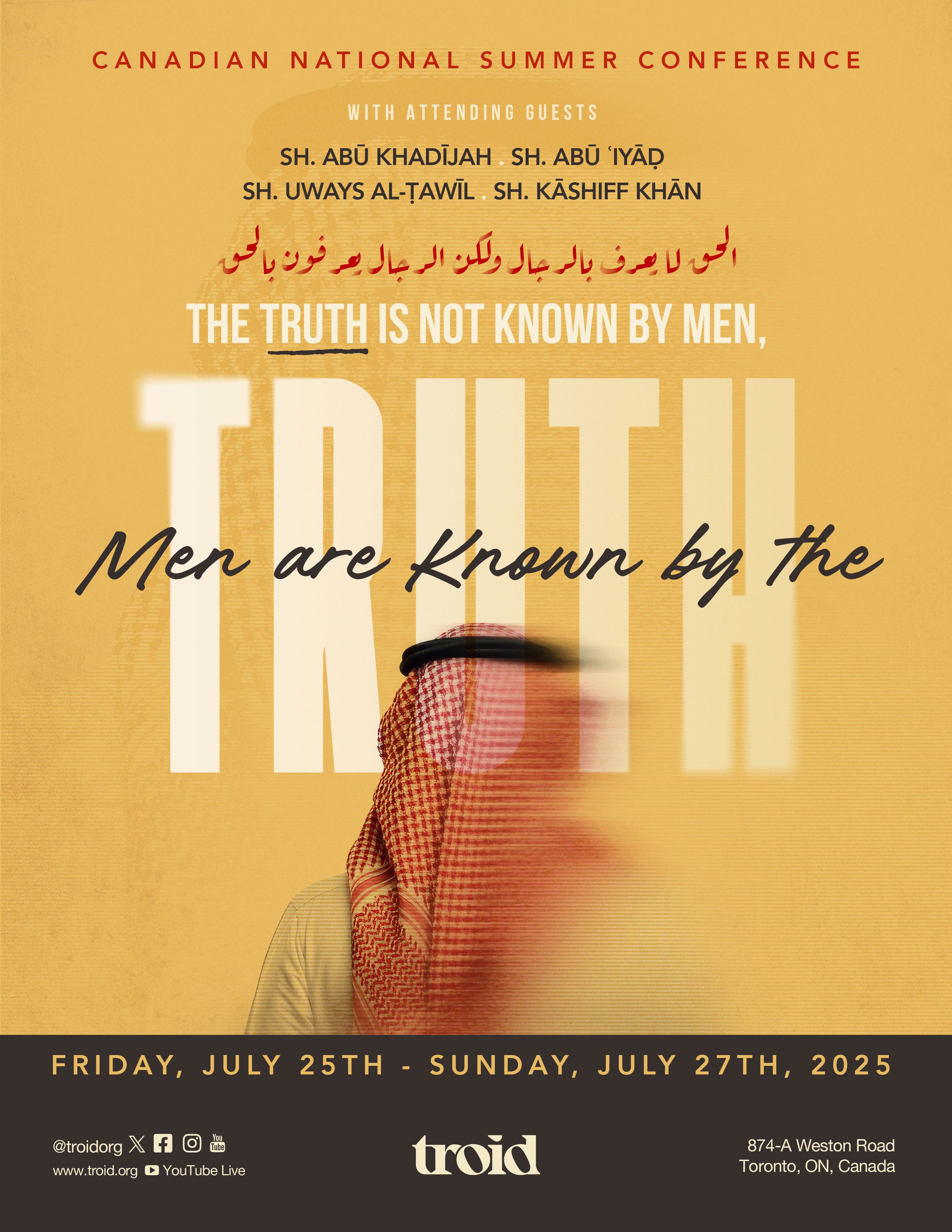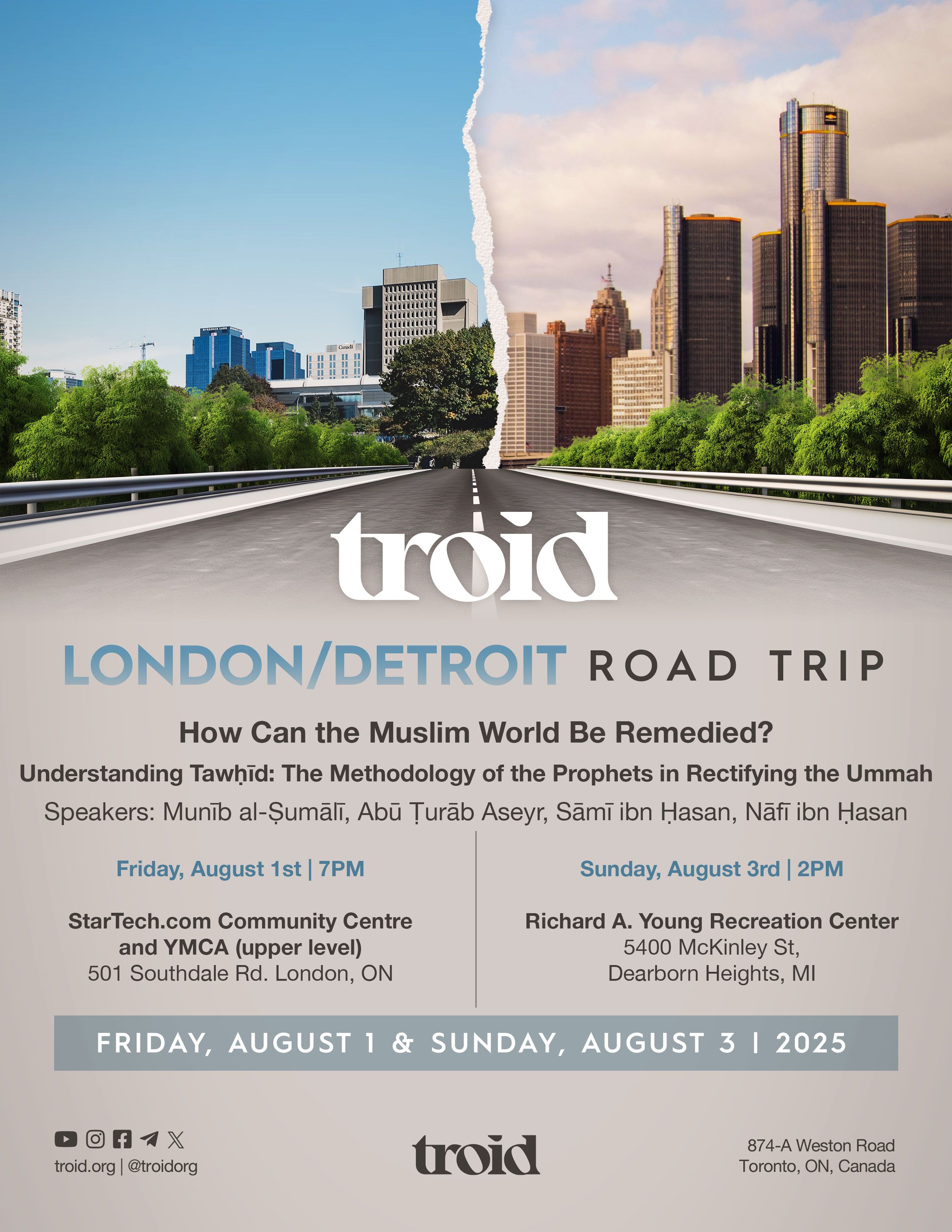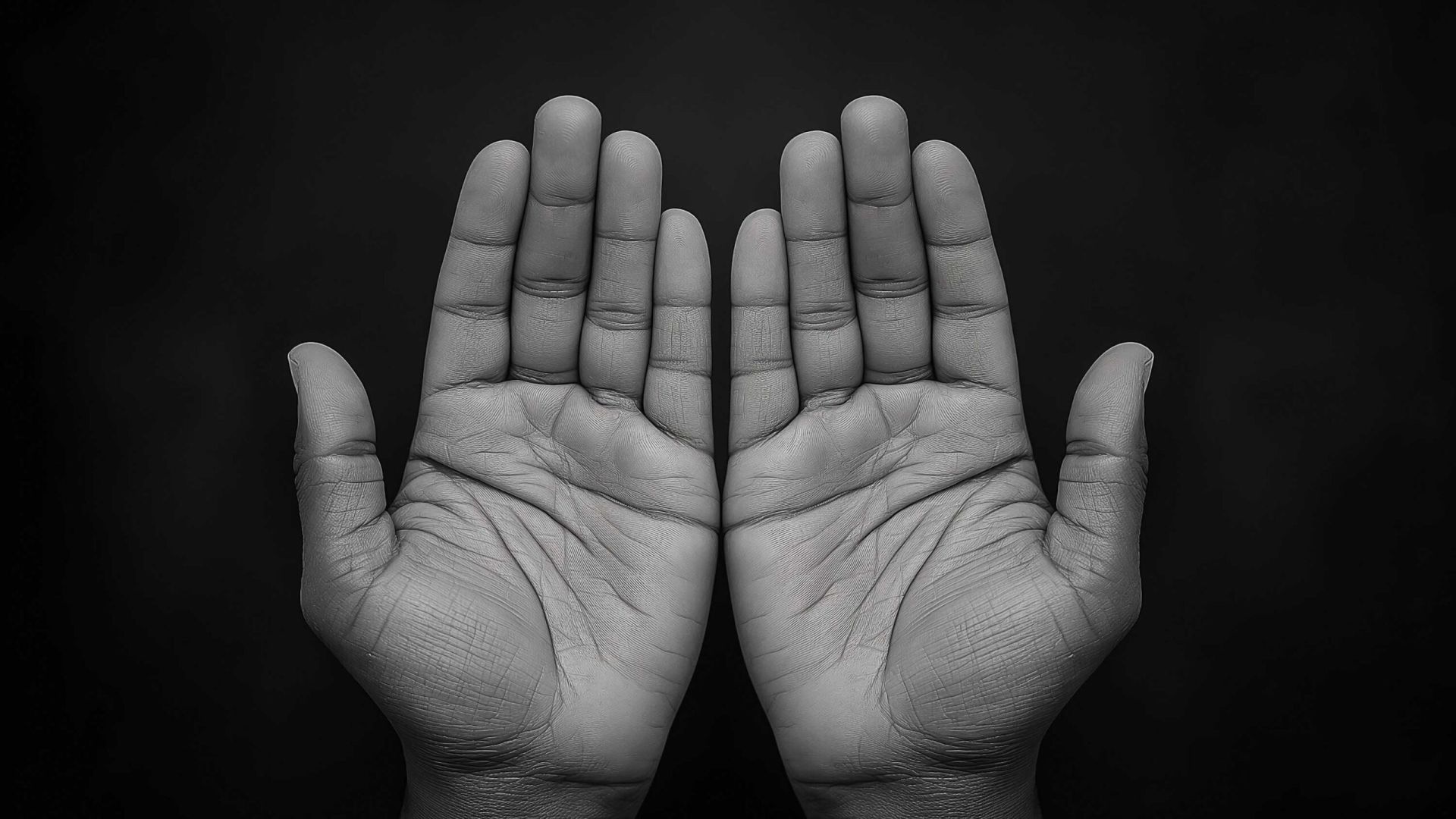A Simple Guide to ʿUmrah and Madīnah
Shaykh Abū Khadījah

Below is a general overview of the topics discussed. It should not be used specifically as the guide. Please listen to the audio for full details, explanation, duʿāʾ etc. The following books and booklets are also recommended to read and travel with:
An Easy Guide to Ḥajj Umrah and Ziyaarah (in accordance with the Qurʾān and Sunnah)
Ḥajj, Umrah and Ziyaarah (pocket size)
Getting the Best Out of al-Ḥajj
History of Madinah Munawarrah
ʿUmrah is an obligation on every Muslim who has reached adulthood and has the ability, once in a lifetime.
The Pillars of Umrah are Three:
– Entering iḥrām
– The ṭawāf (circumbulation) of the ka’bah
– The saʿī (moving between safah and marwah)
* Leaving out a pillar invalidates the ʿUmrah
The Obligations of ʿUmrah are Two:
– Entering iḥrām from its place (the miqāt – this is the obligation)
– After performing the saʿī, to shorten the hair
* Leaving out an obligation has penalties
The Rites of the ʿUmrah (lesser pilgrimage):
– What is the iḥrām and what nullifies it?
Common misnomers which people claim breaks the state of iḥrām, however they do not:
– It is permissible to bathe in a state of iḥrām
– It is a permissible to scratch one’s hair (due to a need)
– It is permissible to make ḥijāmah (blood letting)
– It is permissible to smell plants
– It is permissible to remove a broken/damaged nail
– It is permissible to take shade (due to heat/rain etc.)
– It is permissible to wear a belt over the izār
– It is permissible to wear a ring/watch/glasses/money pouch or satchel
The State of iḥrām and the Garment
– It is not permissible to wear stitched garments as an iḥrām (“stiched” here refers to fit-to-wear garments like trousers or a shirt)
– iḥrām is a state (not a garment alone) entered into at one of the appointed miqāt (locations)
– iḥrām prevents certain clothing and acts
– One should make the intention for ʿUmrah before entering into a state of iḥrām
– One should make ghusl before entering into iḥrām
– Men may wear any clothing they wish provided it is not stitched, and in the shape of the body. They wear a Ridāʾ (rectangular upper garment) and an Izār (waist sheet) covering the navel to the knee, and not below the anklebone
– The ridāʾ should cover the shoulder and upper-back, arms etc.
– The man may wear sandals that do not cover the anklebone
– He may not wear a hat, kūfī, turban etc. (no head covering)
– He may not wear socks (unless he cannot find any sandals)
– The clothing of iḥrām may be put on before reaching the miqāt (if so desired, i.e. aeroplane)
– Intention of iḥrām is not made however, until reaching the miqāt
– He may perfume himself as he pleases upon travelling, however it should not leave a colour
– It is to be applied to the skin and scalp etc. not on the garment (as this is not permissible), however, once he reaches the miqāt, he may not perfume himself thereafter (till completion of his ʿUmrah)
– He/she makes a vocal intention/action at the miqāt, he/she says the talbiyyah and at that stage he is now in a state of iḥrām.
– The woman does not have any special garments for ʿUmrah, she wears her normal permissible attire
– However she may not fasten a niqāb and tie it or any face-covering permanently affixed
– She may cover her face by pulling her khimār etc. over her face when men pass, this is allowable
– She may not wear gloves
– She may use oils on her body, however it may not leave an attractive scent.
Also upon reaching the miqāt/entering iḥrām:
– Your iḥrām garment should be ready (especially on a plane, will need to prepare in advance), upon entering iḥrām:
– No marriage or marriage proposals
– No clipping nails or removing hair (head or body)
– No hunting game
– No sexual intercourse (or lustful contact)
* The expiations for the above are mentioned in the audio
– He/she says “Here I am ‘O Allāh, making ʿUmrah”
– If one fears not being able to complete ʿUmrah due to illness or other problems, he may say: “O Allāh, my place is wherever you prevent me” and he may come out of iḥrām without penalty and he may complete this obligation of ʿUmrah another time.
– There is no special prayer for iḥrām
– If the obligatory ṣalāh is in, one may follow the sunnah, praying the obligatory first then entering iḥrām
– After making the talbiyyah for ʿUmrah, stand facing the qiblah, thereafter he states, “O Allāh, this is an ʿUmrah, there being in it, no showing off, not to be seen or to be heard.”
– Thereafter, one should make the talbiyyah, with a clear voice, loud (but not in chorus), so he/she oft-repeats, “Here I am O Allāh, Here I am O Allāh, you have no partner, verily all praise is to you, and every bounty and blessing is from you, all dominion belongs to you, you have no partner (in worship).”
– Women partake in the talbiyyah likewise, they raise their voices aloud also (except if they fear fitnah)
The permissible acts in iḥrām:
– It is allowed to kill vicious and harmful animals in the haram area
– It is permissible to wear trousers, other garments etc. only for the one who cannot find an izār/ridāʾ etc.
– Permissible to wear leather socks that are below the anklebone as they resemble wearing sandals.
– Permissible to wash your garments (take them off to wash)
Upon reaching Makkah
– It is permissible to make ghusl before entering makkah (this is a sunnah), however be careful, the soap and toiletries to be used must be free of perfume! Unscented, or just use water alone
Sexual relations in Iḥrām?
– The one who engages in sexual intercourse before shorting the hair, his umrah is still valid but he must sacrifice a sheep
– The one who engages in sexual intercourse before the ṭawāf or the saʿī, his umrah is invalid, needs to be repeated and he has to sacrifice an animal.
Entering Masjid al-Haram up until the Completion of the ʿUmrah
The Ṭawāf (Circumambulation)
– Make the duʿāʾ for entering a masjid
– Upon seeing the ka’bah, one may raise his hands and make duʿāʾ (if he desires)
– One should be in wuḍūʿ upon entering the masjid during ʿUmrah
– Purification/wuḍūʿ is a condition for ṭawāf
– There is no taḥiyyat al-Masjid (two rakahs) for the one intending umrah, go straight to the kab’ah to being ṭawāf
– It is permissible to be carried or pushed (wheel-chair) for the injured one.
– Upon arriving at the ka’bah, he ends the talbiyyah, he goes to the black stone, wipes it with his right hand and kisses it or if he may not, he touches it and kisses his hand, but if he may not touch it, then he waves towards it but he does not kiss his hand in this case, saying “Allāhu Akbar” or “Bismillāhi wa-Allāhu Akbar” (there are four sunan of this act, mentioned in the audio)
– He should not push/shove to get to the black stone
– He begins the ṭawāf (circumambulation), with the direction of the ka’bah on the left
– A person may speak in ṭawāf (circumambulation) but mention nothing but good
– The man exposes his right shoulder, keeps the left covered
– The men do the raml (in the first three circuits), women do not run
– In the last four circuits, he walks
– If one is with his mother/wife etc. and feels he needs to stay with her, he can walk
– Each ṭawāf begins at the black stone and ends at the blackstone
– The yemeni corner, the last corner returning to the black stone, he touches it, if he cannot, he leaves it alone (not pointing etc.)
– It is not established that the Prophet (ﷺ) said “Allāhu Akbar” between the yemeni corner and the black stone
– The recommend duʿāʾ (to be said alone, not in a group) are mentioned on the audio
– A person should make plentiful duʿāʾ and dhikr as much as possible, no specific type or limitation, a person should ask for good for his family and his self etc.
– Once completing the 7 circuits, he covers both his shoulders again (as he/she will pray now) 2 Rakah Behind the Staton of Ibrāhīm- He/she then proceeds to the Station of Ibrāhīm [duʿāʾ mentioned in audio]
– He/she then prays 2 rakahs behind the Station of Ibrāhīm or further back if it is difficult, it is recommended to recite Sūrah al-Kāfirūn in the first rakah, Sūrah al-Ikhlās in the second rakah
– Then he/she proceeds to the zam zam well (or the taps now) and drinks from it and pours it over his head
– He/she then returns to the black stone (if able) and makes taker (if difficult, then move to next step)
The saʿī (between Safah and Marwah)
– He/she then departs to the saʿī (between safah and marwah), firstly going to safah, mounting it, reciting a certain duʿāʾ [see audio]
– He mounts safah, until he sees the ka’bah, facing it, praising Allāh [takbīr etc. see audio]
– He then raises his hands making duʿāʾ for whatever he desires of good [see audio]
– He repeats the dhikr and duʿāʾ three times each
– He then moves to marwah, running from the first green marker to the second marker (women walk)
– He then reaches marwah (repeating what was done at saffah)
– There are 7 total circuits, going from safah to marwah is 1 circuit, going from marwah to safah is 1 circuit
– It is better to be in purity, however, the saʿī can be done without wuḍūʿ
– Upon finishing the 7th circuit at marwah, then one mounts it but does not state the dhikr.
Removing hair from the head/concluding ʿUmrah
– After this, the man concludes by shaving his hair (preferred) or shortening from it. The women is prescribed to shorten the hair (not shave) but not longer than a fingertip’s length
– At this point, his/her ʿUmrah is complete, he is out of the state of iḥrām and those things that were not allowed for him become allowable again
-Make the duʿāʾ for leaving the masjid upon exiting.
Other benefits:
– Praying in the masjid al-haram is 100,000 times that of a regular masjid (which is 27 times), one should seek to make ṣalāh there, making ʿibādah often
– The zam zam water is a cure, one should drink it as much as he/she likes, making duʿāʾ
– The traveller does not pray the sunan (the emphasized sunnan around the ṣalāh with a few exceptions)
– Upon leaving makkah, it is a sunnah to make a farewell ṭawāf, making the last act in Makkah, performing this act, some Scholars say it is recommended, making 7 circuits and then praying two rakah behind the Station of Ibrāhīm.
The Virtues of Madīnah:
– Visiting Masjid an-Nabī in Madīnah is not a part of ʿUmrah
– It is encouraged to visit Masjid an-Nabawee in general
– It is allowed to go to the graves of the Prophet (ﷺ) and his Companions (raḍī Allāhu ʿʿʿanhum) when in Madīnah (not specifying a journey to Madīnah just for it).
– It should be done after praying in and visiting Masjid an-Nabawee (showing the primary intention of the journey is to visit the masjid of the Prophet (ﷺ)).
– Praying in the Rawdah is recommended (a garden from amongst the gardens of Paradise).
– Travellers may shorten prayers, however, be careful, one should follow the Imām in his number of rakahs
– The etiquettes of visiting the graves is mentioned in the audio
– The virtues of visiting Masjid al-Quba, praying two rakah in it and its reward
May Allāh Bless Your ʿUmrah and Accept it from you!!












